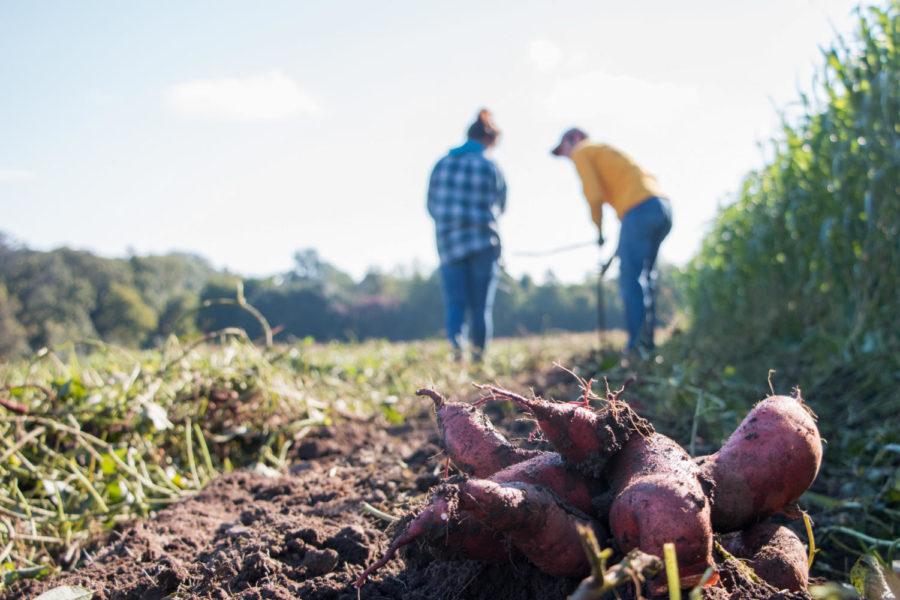ISU professor contributes in fight against viral disease that threatens maize
Emily Blobaum/Iowa State Daily
Sweet potatoes are one of the many crops available for students to purchase through the Horticulture Research Station.
March 28, 2017
Iowa State agronomy professor Thomas Lubberstedt helped contribute research in identifying a corn gene that is resistant to a virus currently wreaking havoc on crop yields in most countries around the world that cultivate corn.
When coupled with other potyviruses, the virus, known as sugarcane mosaic virus, can cause a condition know as maize lethal necrosis disease. This condition can devastate crops, even leading to a total yield loss.
The virus isn’t exclusive to maize, either. Sugarcane, wheat and sorghum are all vulnerable to devastating losses. While it isn’t prevalent in the United States, crops in Southeast Asia, East Africa and South America have all been affected.
“Potyviruses have been around anyway,” Lubberstedt said. “But they haven’t really been that bad, so they could be managed somehow. But when this [virus] came along it really caused trouble quickly.”
The virus works by taking over a plant protein vital to photosynthesis and energy production, using those channels to spread throughout the plant.
It can be spread rapidly from plant to plant by aphids, making the use of sprays and other pesticides ineffective. The only way to stop the virus, Lubberstedt said, is through genetic resistance.
Lubberstedt believes they’ve taken the first step. In a study published in March, Lubberstedt and his co-author identified Scmv1 as a gene that, when expressed at a high rate, is resistant to sugarcane mosaic virus and, possibly, to this whole group of potyviruses. It works by binding with the plant protein that the virus attacks, competing with it and halting its spread.
But the work wasn’t done quickly. Lubberstedt has been studying corn trait mapping since the 1990s, when he lived and worked in Germany.
“In this mapping approach you kind of zoom in stepwise, you narrow down until you really get to a singular, or a few, candidates,” Lubberstedt said.
It was in Germany where Lubberstedt met Mingliang Xu of China Agricultural University, who led the international team that worked on this latest research. The two collaborated in researching two separate resistance genes: Scmv1 and Scmv2.
Scmv1, which was the focus of Xu’s research, was the gene featured in this latest study. Lubberstedt said his research on Scmv2 will hopefully be published later this year.
“I hope it facilitates the use of the resistance,” Lubberstedt said. “In maize, you could actually use it already by marker based introgressions.”
Lubberstedt said that, by better understanding these genes, it is possible to apply newer genome editing technologies to generate even better resistance.
“What we are using is kind of random variation,” Lubberstedt said. “But by understanding what really is behind the resistance, perhaps you can artificially generate something that’s not available in nature.”







